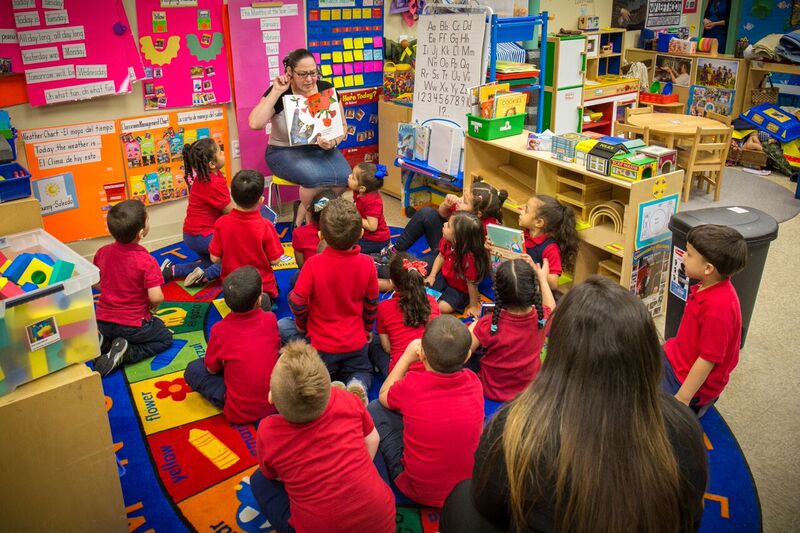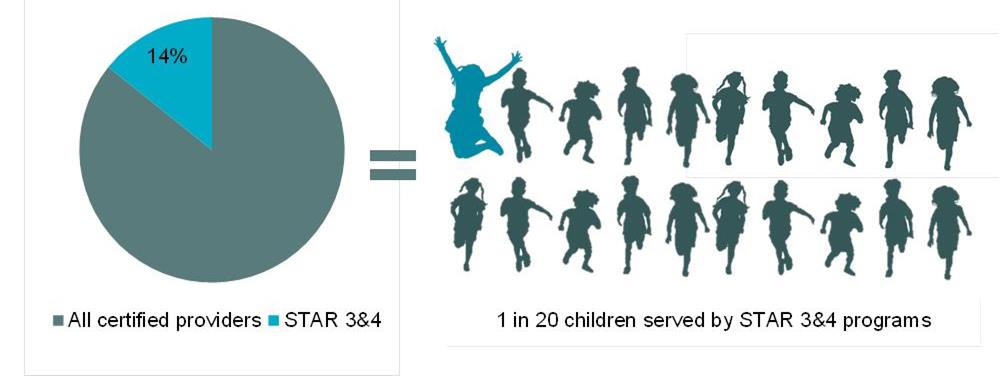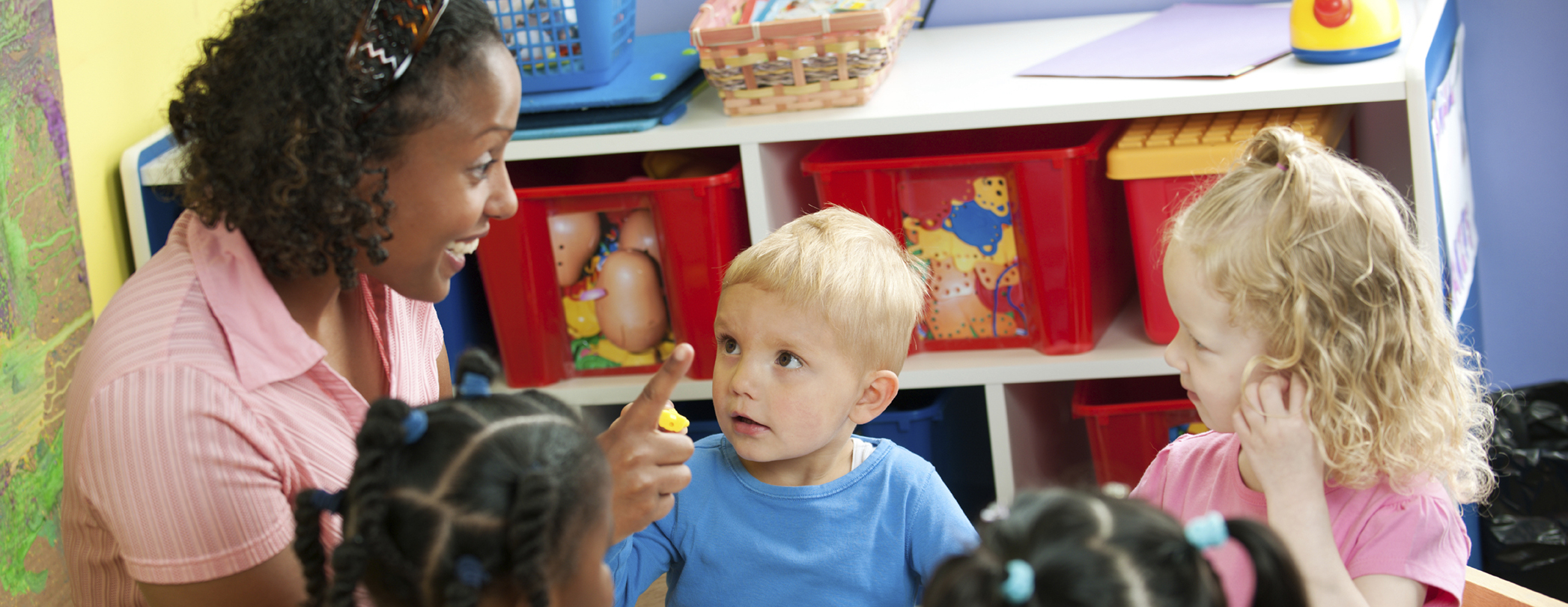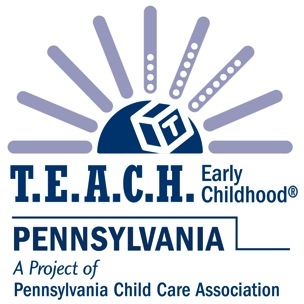Blog

- Details
By Laura Sosinsky
About 14% of certified providers in Philadelphia are considered high quality (STAR 3 or 4) and are serving about 5% of city children under 5.1 This is a fraction of the city’s unmet need for slots in high-quality centers.

How are efforts in Philadelphia working to expand the number of high-quality slots available for young children? One way is through facilities initiatives.
Early Childhood Spaces Matter for Children, Teachers, and Families
Staff and space directly translate into a center’s capacity to provide slots for children at each age group and are the two most important (and most expensive) components of a high-quality child care experience. This summer, Reinvestment Fund and Public Health Management Corporation released a new guide to provide currently operating child care providers or prospective providers in Philadelphia with information for the planning and design of high-quality early childhood spaces.
Early childhood spaces, if well designed, can encourage a child’s social, physical, language and cognitive, creative, and emotional development through play and learning in a healthy, safe, stimulating, and aesthetically pleasing environment. Space that fosters exploration through physical arrangement and child-sized furniture and materials can increase the complexity and sophistication of play and the amount of time children spend in complex play, which is how young children learn. Equipment and toys that are well-designed and thoughtfully organized can increase children’s attention spans and improve cooperative group play. Adequate quiet space with soft materials and furniture that are visually set apart may support a homier feel and increase interaction with books. Sufficient duplicates of toys and small centers encourage cooperation and discourage tussles over possession. Circulation paths can ease transitions between activities and spaces, reducing behavior problems and keeping children safe. Outdoor space has a particular importance in offering children many more opportunities for particular types of play experiences, including the most complex form of interactive peer play, more readily than the classroom.
Conversely, when problems occur over and over, the design and arrangement of the space could be part of the trouble.2 Crowding is associated with children’s attentional deficits and more time off task. Open plans are similarly associated with distraction and off-task time, plus are noisier. Noise (chronic and acute high levels) may harm children’s memory and recall, perhaps by reducing attention and ability to tune out distractions, and can contribute to cognitive development problems. Crowding and noise also correlate with a rise in cortisol (a stress hormone) over the morning period and may reduce compliance.
Crowding, noise, and other space problems might reduce the amount and quality of adult-child interactions. Teachers are the most critical element for children and are likely better able to do their jobs well in a well-designed space. High noise levels are a common teacher complaint. Teachers working in loud classrooms report greater fatigue, annoyance, and less patience, and teaching time is lost and teaching styles may be altered.
Early childhood spaces can also be designed to be friendly to families. Welcoming entrances and sufficient space for greeting and parting, security features, and planned places to organize children’s belongings, such as cubbies near the entrance, are elements that should not be forgotten in the design stages.
Of course, a center has to meet licensing and regulatory requirements. Centers are inspected by everything from the fire department to the Department of Public Health’s Office of Food Protection. Food safety, hygiene in toileting and diaper changing, prevention of the spread of germs, and support of healthy sleep and rest all start with the design of the space. Teachers need to be able to supervise children, and things like transparent barriers, low-level partitions, dividers, toilets, and sinks in the classroom can increase visibility, allow ratios to be maintained, and lessen program interruptions.
Childcare Center Design Guide: A new resource
This new guide compiles licensing and regulatory requirements established by the Pennsylvania Department of Human Services (DHS) and the City of Philadelphia as a resource to centers with plans to expand or renovate spaces in a current program, purchase and renovate existing non-childcare facilities, or design and construct a new center.
The guide also compiles best practice recommendations from three resources: the National Association for the Education of Young Children’s accreditation standards (NAEYC), the Caring for Our Children health and safety standards, and the Environment Rating Scales’ (ERS) quality indicators, which are widely used observational assessment tools including in Pennsylvania’s Keystone STARS. Among other factors, the ERS assesses how well indoor space meets the needs of children and staff as well as the arrangement of the room for play and learning. In STARS centers, Space and Furnishings scores positively correlate with assessments of children’s learning and development. In one example, ERS scores at the Jolly Toddlers center suggest how positive staff-child interactions and developmentally appropriate room arrangement and indoor space can support positive child behavior.
The guide describes the planning and predevelopment steps to consider prior to expanding or constructing a child care center, such as interviewing architects experienced in child care design and developing a project budget. The project budget should include all capital expenses, such as the cost of land, buildings, and equipment needed to bring the project to fruition, as well as noncapital start-up costs (e.g., the cost of licensing, permits, legal and architecture fees).
The takeaway? The quality of the space in a child care setting (amount of space, color, light, noise, and materials) can affect early learning, and any expansion project should consider the design elements critical to quality in early childhood spaces.
References
American Academy of Pediatrics, American Public Health Association, National Resource Center for Health and Safety in Childcare and Early Education. (2011). Caring for Our Children: National health and safety performance standards; Guidelines for early care and education programs. 3rd Edition. Elk Grove Village, IL: American Academy of Pediatrics; Washington, DC: American Public Health Association. http://cfoc.nrckids.org/WebFiles/CFOC3_updated_final.pdf
Colbert, J. (1997). Classroom design and how it influences behavior. Early Childhood News, 9(3), 22-29. http://www.earlychildhoodnews.com/earlychildhood/article_view.aspx?ArticleID=413
Evans, G. W. (2006). Child development and the physical environment. Annual Review of Psychology, 57, 423-451. https://pdfs.semanticscholar.org/a7e6/f27e919e775df2f9345dcf21e82be8790708.pdf
Harms, T., Cryer, D., & Clifford, R.M. (2006). Infant/Toddler Environment Rating Scale (ITERS): Revised Edition. New York: Teachers College Press.
Harms, T., Cryer, D., & Clifford, R.M. (2005). Early Childhood Environment Rating Scale (ECERS): Revised Edition. New York: Teachers College Press, 2005.
Helburn, S. W., & Howes, C. (1996). Child care cost and quality. The future of children, 62-82. https://www.princeton.edu/futureofchildren/publications/docs/06_02_03.pdf
Hirsh-Pasek, K., & Golinkoff, R. M. (2008). Why play= learning. Encyclopedia on early childhood development, 1-7. http://www.child-encyclopedia.com/sites/default/files/textes-experts/en/774/why-play-learning.pdf
Li, J., Hestenes, L. L., & Wang, Y. C. (2016). Links between preschool children’s social skills and observed pretend play in outdoor childcare environments. Early Childhood Education Journal, 44(1), 61-68. https://link.springer.com/article/10.1007/s10643-014-0673-2
NAEYC Early Childhood Program Standards and Accreditation Criteria: The Mark of Quality in Early Childhood Education. (2005). Washington, DC. https://www.naeyc.org/academy/standardsandcriteria
Office of Child Development and Early Learning (OCDEL). (2017). Program Reach and Risk Assessment, State Fiscal Year 2015-16, April 2017. Pennsylvania Office of Child Development and Early Learning, Commonwealth of Pennsylvania Department of Education and Department of Human Services, Harrisburg, PA. http://www.pakeys.org/uploadedContent/Docs/Reach%20and%20Risk/Reach%20and%20Risk%202015-16%20FINAL%2004032017.pdf
Schrecker, B., Norton, M.H., and Goldstein, I. (2017). Estimating Changes in the Supply of and Demand for Child Care in Philadelphia. Policy Solutions at Reinvestment Fund, Philadelphia, PA. https://www.reinvestment.com/childcaremap/pdfs/Reinvestment%20Fund%20-%20Estimating%20Changes%20in%20the%20Supply.pdf
Shim, S. Y., Herwig, J. E., & Shelley, M. (2001). Preschoolers' play behaviors with peers in classroom and playground settings. Journal of Research in Childhood Education, 15(2), 149-163. http://www.tandfonline.com/doi/abs/10.1080/02568540109594956
Singer, D. G., Golinkoff, R. M., & Hirsh-Pasek, K. (Eds.). (2006). Play= Learning: How play motivates and enhances children's cognitive and social-emotional growth. Oxford University Press.
Sirinides, P., Fantuzzo, J., LeBoeuf, W., Barghaus, K., & Fink, R. (2015). An inquiry into Pennsylvania's Keystone STARS. Philadelphia, PA: Consortium for Policy Research in Education.
Trancik, A. M., & Evans, G. W. (1995). Spaces fit for children: Competency in the design of daycare center environments. Children's Environments, 311-319. https://pdfs.semanticscholar.org/a7e6/f27e919e775df2f9345dcf21e82be8790708.pdf
1 The maximum potential supply of seats, if every city center were to enroll to its occupancy capacity, is 14,637 (20.9% of all certified seats, and 14.5% of all seats). An OCDEL report from June 2017 indicates 10,362 children are in STAR 3 and 4 centers. However, occupancy capacity is not the same as enrollment capacity, which may depend on other factors like staffing levels. “Maximum capacity” means the total number of children that the facility is permitted to serve, as specified on the license. The maximum capacity is determined by the square footage, showers, sinks, and toilets and protects from overcrowding, and ensures that the number of children served in the facility does not exceed toilet, bathing or hand-washing facilities necessary to maintain sanitary conditions. “Enrollment capacity” means the total number of children that the center is permitted to serve to be in compliance with staff-child ratios and group size licensing regulations. If staffing levels are lower than maximum building capacity, the potential supply of seats is lower as well.
2 Better Kid Care through Penn State Cooperative Extension offers a professional development lesson, Changing Spaces, to help child care practitioners explore ways to analyze space in a child care setting, identify trouble spots, and learn ways to improve space arrangement.

- Details
Alison Lutton, early childhood education professional development systems expert, examines the updated Child Care and Development Block Grant (CCDBG) and requirements of the Child Care Development Fund (CCDF) dedicated to improving child care quality. Specifically, the rule to increase the proportion of the federal grant that states must spend on improving quality in child care programs, called the “quality set-aside,” including new requirements for professional development.
CLICK HERE to read more about the requirements for a professional development framework that supports career progression and learn how Philadelphia stakeholders are transforming professional development work and supporting career progression for our early childhood teachers.
- Details
By Mary Graham, Executive Director, Children's Village
A July 16th article by Anya Kamenetz, National Public Radio, Teachers With Student Debt: The Struggle, The Causes And What Comes Next, highlighted the challenges of student debt that thousands of American teachers face each month. The author collected and analyzed data from more than 2,000 respondents to a Teacher Student Debt survey. Student debt among teachers was specifically selected as an area of study because of a confluence of current issues, including chronic concerns over low teacher compensation amid calls to improve teacher quality; the rising cost of higher education; the increasing reliance on loans to pay for it; and changing policies from the Trump administration.
Comments from the survey included:
"I am overloaded and struggling. It's terrifying."
"I feel like I'll be making the last payment from my grave."
"It is an albatross around my neck. Years of paying and I feel like I'm getting nowhere."
"Help!"
"My monthly payment is estimated at one-fourth my total income. Even at that rate, I will take more than 10 years to pay off my loans."
Contrast those comments with those gathered from teachers of young children that benefit from the T.E.A.C.H. scholarship:
 “I secured employment and received a T.E.A.C.H scholarship, and my life has turned around. I was able to work to take care of my children while I was going to school. Moreover, I was given time to study and reimbursement for books and travel. These support systems are important to a person like me, who has been on her own since the age of 16 and does not have much of a support system at home. I was the first in my family to even go to college, so I am so proud of myself!”
“I secured employment and received a T.E.A.C.H scholarship, and my life has turned around. I was able to work to take care of my children while I was going to school. Moreover, I was given time to study and reimbursement for books and travel. These support systems are important to a person like me, who has been on her own since the age of 16 and does not have much of a support system at home. I was the first in my family to even go to college, so I am so proud of myself!”
“As a single parent, I pretty much live paycheck to paycheck and receiving a T.E.A.C.H. scholarship was my ONLY way to accomplish the goal of attaining an Associate’s degree.”
T.E.A.C.H. (Teacher Education And Compensation Helps) Early Childhood® is a national program of the North Carolina Child Care Services Association designed to help address the need for a well qualified, fairly compensated and stable early childhood education (ECE) workforce. The T.E.A.C.H. strategy includes five C’s:
-- Comprehensive Scholarships provide support for the ECE workforce to access college courses, certificates, and degrees in early childhood education resulting in no student debt, using a shared cost approach.
-- College Education requires completion of a specified number of credit hours per contract at a participating college or university coupled with support from T.E.A.C.H. counselors who aid recipients in successfully navigating college processes and finding needed resources to increase core knowledge.
-- Compensation mandates increased compensation through the provision of a bonus and/or a raise for recipients who complete their education in a prescribed period of time to support the economic viability of staff.
-- Commitment establishes a contract between employee, employer, and T.E.A.C.H. that requires the recipient to remain in the sponsoring program for a specified period of time (generally one year) after they receive their education to reduce staff turnover.
-- Counselors support each recipient with a state-based T.E.A.C.H. Counselor able to assist the student in securing a scholarship, navigating the college processes, setting goals, and monitoring progress and needs.
In Pennsylvania, the T.E.A.C.H. program is funded by the Commonwealth via the Office of Child Development and Early Learning, administered by Pennsylvania Child Care Association (PACCA), and includes nearly 25 participating Institutions of Higher Education. The Fiscal Year 17-18 budget allocates nearly $2.8 million, which is anticipated to fund more than 1,000 scholarships.
In order to be eligible applicants must:
- Work approximately 25-30 hours per week directly with children in a DHS-certified child care program participating in Pennsylvania’s Quality Rating Improvement System, Keystone STARS, Head Start or PreK Counts Program;
- Earn $19 or less an hour ($25 or less per hour for directors);
- Be interested in pursuing coursework at a participating college (at least 9 credits per year) toward a degree or credential in early childhood education.
Children’s Village is a nationally accredited early childhood education center located in Philadelphia. Serving more than 450 children ages 13 months to 13 years, Children’s Village has benefited from T.E.A.C.H. scholarships in numerous ways. Of current staff, 28 of 42 teachers (66%) obtained degrees or are finishing degrees through the T.E.A.C.H. program.
T.E.A.C.H. has made it possible for Children’s Village to attain an extremely high teacher retention rate (95%) as well as add to the diversity of the teaching staff. Eight of the current 42 teachers (19%) started out as parent volunteers, who were then hired as substitutes and enrolled in T.E.A.C.H. Of these eight, all are English language learners and speak a variety of other languages (Mandarin, Cantonese, Fujianese, Taiwanese, Indonesian, Spanish). T.E.A.C.H. supported their enrollment in non-credit bearing English language courses, which in turn prepared them to pursue credit-bearing course work through subsequent T.E.A.C.H. scholarships.
Children’s Village used the availability of T.E.A.C.H. scholarships to promote educational degree attainment for staff above minimum levels required by various funding sources and accrediting bodies. As both a Keystone STAR 4 and NAEYC accredited center, we strive to have staff hold the highest credential possible. Without T.E.A.C.H., Children’s Village would not have been able to meet this goal. When Pennsylvania changed regulations to require lead teachers in PA Pre-K Counts-funded classrooms to hold PA Certification in ECE, Children’s Village was already meeting this requirement. All assistant teachers have a minimum of 18 ECE credits, with most having earned an Associate’s degree in ECE.
The T.E.A.C.H. program is strategically designed to allow teachers of young children to earn advanced degrees without incurring debt. And while the program targets early childhood education teachers because they typically earn less than those working in the K-12 system, the NPR article makes clear that even teachers in K-12 struggle to make student loan payments. Perhaps the T.E.A.C.H. program could be used as a model for the development of a national scholarship program for K-12 teachers; one that similarly allows them to earn advanced degrees while working, without incurring debt. The ongoing education of all teachers is a public benefit and one that should not have to be repaid by individual teachers, given the reality of low compensation in the field of education.
For more information regarding implementation of T.E.A.C.H. and the impact of T.E.A.C.H. at Children’s Village, join Mary Graham’s workshop session at the upcoming Early Childhood Education Summit in State College, PA in mid-October. Or, register for Mary’s “Growing your Parents and Teachers through T.E.A.C.H.” workshops via the PA Keys PD Registry and receive PQAS credits. Sessions are held in Philadelphia and are currently scheduled for August 15th from 9a.m.-12noon and October 4th from 9a.m.-12noon.
Mary Graham, Executive Director of Children’s Village in Philadelphia, has a BA in Social Welfare and an MA in ECE. Having spent her entire 41-year career in the ECE field, Mary has been director at the center for the past 29 years. She has been involved in the professionalization of the ECE field and is sought after on the local, regional, and national levels to share her expertise, experience, and perspective as a practitioner. She has served on several boards and advisory committees, including PACCA, the Delaware Valley Association for the Education of Young Children (DVAEYC) and is involved with the National Women’s Law Center Child Care and Early Learning National Advocates Group. She received her PQAS certification in 2016 and presents professional development in the area of ECE Business and Management issues.
- Details
The role of positive interactions-- child-child, teacher-child, teacher-teacher --is receiving greater significance in the discussion of high-quality early learning settings. And deservedly so. In Pennsylvania, we've seen the introduction and increased use of the Early Childhood Environmental Rating Scale, Third Edition (E3) which shifts the observed indicators to focus more on intentional teaching and adult-child interactions for preschool age groups (3- to 5-year-olds). We have also seen an increase in the promotion and use of Positive Behavior Interventions and Supports (PBIS) in early childhood programs. In light of this, we decided to take a close-up look at a program that is fully implementing PBIS in their classrooms and how this practice relates to E3. CLICK HERE to learn more about Jolly Toddlers, a STAR 4 program in Bucks County.
Sign Up for Our Mailing List
If you'd like to be notified when we have upcoming releases or events, please subscribe to our email list.
* indicates required